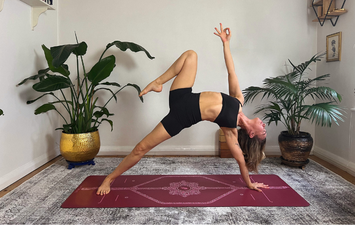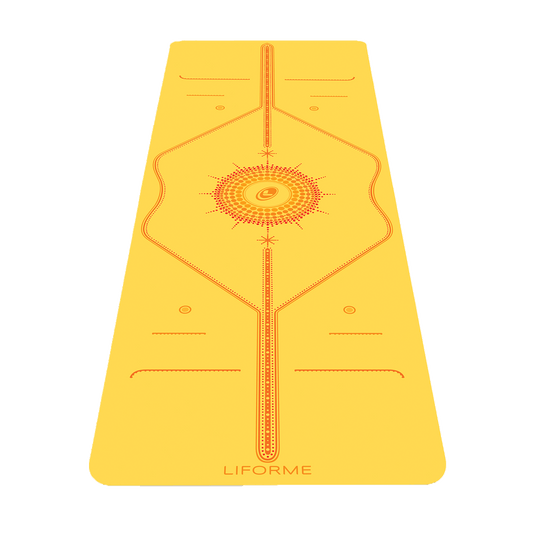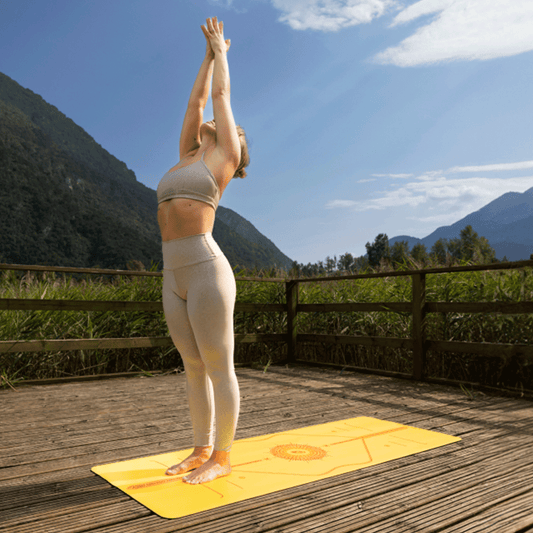Some yoga experts have argued that Wild Thing places the shoulders in an unstable position, which can lead to injury. Others feel that the shoulder girdle has sufficient range of motion to support a safe version of the pose. As with any posture, your mileage will vary because every body is different. If Wild Thing or any other pose causes pain in your joints, you can choose not to practice it or adapt it in a way that makes it comfortable.
What’s the Difference Between Wild Thing and Flip Dog?
According to research by Dr Theo Wildcroft, Wild Thing originated as a variation of Side Plank, specifically as a way to gracefully fall out of an attempt at Full Vasisthasana. Lifting your top leg away from the support of your bottom leg in Side Plank tends to cause the body to tip over backwards. Landing the upper leg behind you prevents a fall to the floor and resulted in the creation of a brand new posture.
Wild Thing essentially retains the position of the bottom leg and arm from Side Plank. The bottom leg stays straight, while the top leg is bent with the ball of that foot on the floor.
In his book 40 Days to Personal Revolution (2003), Baron Baptiste writes that his version of a Flipped Downward Facing Dog “arose very spontaneously and naturally as I developed my own style…,” perhaps in the process of playing with a very opened Down Dog Split, as that is Baptiste’s point of entry to the pose. Flip Dog is set up much more symmetrically than Wild Thing. The feet are flat on the floor and parallel to each other and both knees are kept bent, making the alignment similar to Wheel Pose in the lower body.

How to Do Wild Thing
Benefits:
- Facilitates heart opening
- Stretches the side body, including the intercostal muscles between the ribs
- Improve core strength through balance
Instructions:
- Begin in a Side Plank (Vasisthasana) with your left hand on the floor.
- Lift your right leg to hover above your left leg any amount.
- Bring the ball of your right foot to the floor on the outside of the left leg, landing with your right knee bent.
- If you have been on the knife-edge of your left foot, you can bring more of your sole to the floor while maintaining at least a 45-degree turn out of that foot and keeping the left leg straight.
- Press into both feet to lift your hips and rotate them both to face toward the ceiling. The right hip will naturally stay a bit higher than the left one due to the position of your legs.
- Press into your left palm and open your chest toward the ceiling.
- Your right arm may point straight upwards or you can release it over your head toward the front of your mat.
- Let your head drop back.
- To come out, pivot on the ball of your left foot as you lift the right leg back to the right side of your mat. As your hips and chest face the floor, drop your right hand next to your left hand to come into a Plank position. Alternatively, you can just lower your butt to the floor.

How to do Flip Dog
Benefits:
- Heart opener
- Stretches the side body
- Improves core strength
Instructions:
- From Downward Facing Dog, lift your right leg to an open-hipped Down Dog Split position.
- Bend your right knee so that your right heel comes closer to the right side of your butt.
- Keep opening your hip wider until you essentially flip over by lifting your right hand off the floor and pivoting on the ball of your left foot to bring the left heel to the floor. Land with your right foot parallel to the left.
- Keeping both knees bent, press down into both feet and your left hand to lift your hips and chest up toward the ceiling.
- Reach your right arm up to the sky or toward the front of your mat.
- Release your head.
- To come out, reverse your course by turning your chest back toward the ground, bringing your right hand down parallel to your left one as you lift your right foot, flip your hips to face the floor, and return to a Downward Dog.
Both these poses originated from experimentation, so feel free to play with the forms and discover your own way of flipping your Dog.




































